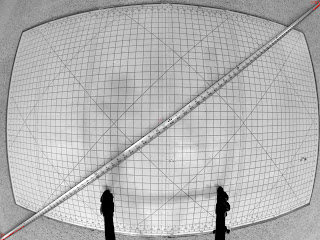1,000 Teslas, 200 years
In my previous post, I simulated my best available information on the SpaceX Tesla roadster. In this post, I investigate a range of possible futures for the Tesla. I started with JPL's HORIZONS ephemeris. It turns out that it can evaluate probabilistic orbits; here are its predictions for close planetary encounters by the Tesla given the current uncertainties in its position:
Date (TDB) Body CA Dist MinDist MaxDist Vrel TCA3Sg Nsigs P_i/p
---------------------- ----- ------- ------- ------- ------ ------ ------ -------
A.D. 2020 Oct 07.26668 Mars .049589 .047961 .052381 8.153 92.21 1.57E5 .000000
A.D. 2035 Apr 22.36925 Mars .014376 .003802 .055862 8.199 601.42 10658. .000000
A.D. 2047 Jan 11.95105 Earth .031798 .022547 .040258 4.488 5203.0 24104. .000000
A.D. 2067 Apr 15.90602 Mars .043165 .004269 .090230 7.193 3779.8 12481. .000000
A.D. 2085 Jan 01.97974 Earth .083090 .007954 .163620 6.224 13899. 32807. .000000
A.D. 2088 Mar 09.97244 Earth .049174 .006455 .085995 5.106 13241. 28115. .000000
A.D. 2123 Mar 13.12397 Earth .054330 .007470 .501619 5.287 1.98E5 31955. .000000
The approach distances are in Astronomical Units (about 150,000,000 km). The TCA3Sg field is the variation in time of closest approach, in minutes. Note how that variation increases with each encounter - the position/velocity differences add up significantly over time.
I then spent some time fiddling with various simulation options. I settled on a relatively new entrant - the REBOUND orbital simulation package. Its advantages are two-fold: it already has an OpenGL visualization mode, and it implements a new fast, accurate orbital integrator called "WHFast". The integrator does diverge somewhat from JPL's simulator - it's unclear right now why that is. But it comes reasonably close, and it is very fast, which is an advantage for my next experiment. I modified REBOUND to draw the particles the way I want, and to do screen grabs to make a movie.
I used the package to simulate 1,000 possible Tesla orbits. I varied the position of the Tesla by adding a random distance with a normal distribution and a standard deviation of about 5 km. I also varied the velocity of the Tesla by adding a random velocity with a normal distribution and a standard deviation of about 1.8 m/s. I chose these values as fractions of the then-current Earth-Tesla distance and speed (which was about 1,000,000 km and 3.5 km/s at the time the ephemeris was generated).
The results are entertaining; without further ado, the video:
As I did the simulation, a new paper came out with similar results, finding that it has a 6% chance of colliding with Earth and a 2.5% chance of colliding with Venus over the next one million years.
Date (TDB) Body CA Dist MinDist MaxDist Vrel TCA3Sg Nsigs P_i/p
---------------------- ----- ------- ------- ------- ------ ------ ------ -------
A.D. 2020 Oct 07.26668 Mars .049589 .047961 .052381 8.153 92.21 1.57E5 .000000
A.D. 2035 Apr 22.36925 Mars .014376 .003802 .055862 8.199 601.42 10658. .000000
A.D. 2047 Jan 11.95105 Earth .031798 .022547 .040258 4.488 5203.0 24104. .000000
A.D. 2067 Apr 15.90602 Mars .043165 .004269 .090230 7.193 3779.8 12481. .000000
A.D. 2085 Jan 01.97974 Earth .083090 .007954 .163620 6.224 13899. 32807. .000000
A.D. 2088 Mar 09.97244 Earth .049174 .006455 .085995 5.106 13241. 28115. .000000
A.D. 2123 Mar 13.12397 Earth .054330 .007470 .501619 5.287 1.98E5 31955. .000000
The approach distances are in Astronomical Units (about 150,000,000 km). The TCA3Sg field is the variation in time of closest approach, in minutes. Note how that variation increases with each encounter - the position/velocity differences add up significantly over time.
I then spent some time fiddling with various simulation options. I settled on a relatively new entrant - the REBOUND orbital simulation package. Its advantages are two-fold: it already has an OpenGL visualization mode, and it implements a new fast, accurate orbital integrator called "WHFast". The integrator does diverge somewhat from JPL's simulator - it's unclear right now why that is. But it comes reasonably close, and it is very fast, which is an advantage for my next experiment. I modified REBOUND to draw the particles the way I want, and to do screen grabs to make a movie.
I used the package to simulate 1,000 possible Tesla orbits. I varied the position of the Tesla by adding a random distance with a normal distribution and a standard deviation of about 5 km. I also varied the velocity of the Tesla by adding a random velocity with a normal distribution and a standard deviation of about 1.8 m/s. I chose these values as fractions of the then-current Earth-Tesla distance and speed (which was about 1,000,000 km and 3.5 km/s at the time the ephemeris was generated).
The results are entertaining; without further ado, the video:
As I did the simulation, a new paper came out with similar results, finding that it has a 6% chance of colliding with Earth and a 2.5% chance of colliding with Venus over the next one million years.

Comments
I'm curious about the Tesla that escapes to interstellar space around year 2194; it seems to have gained too much energy for a gravity assist with periapsis outside Earth's crust. A back-of-the-envelope calculation tells me that a gravity assist from the Earth can give at most 5 km/s, which added to the 34 km/s of the original Tesla at perihelion is not enough to reach the 42 km/s needed for solar escape.
Could you tell me what numbers do you get from your simulation? Specifically the Tesla's speed just before the encounter and its perigee? Did you check for collisions in the simulation?
Thanks a lot!